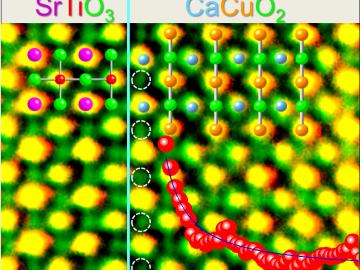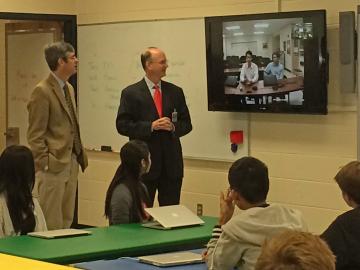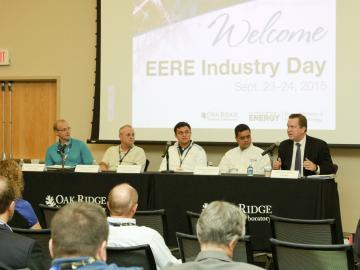Filter News
Area of Research
- Biology and Soft Matter (1)
- Chemical and Engineering Materials (2)
- Chemistry and Physics at Interfaces (3)
- Clean Energy (14)
- Computational Chemistry (1)
- Energy Frontier Research Centers (3)
- Functional Materials for Energy (3)
- Fusion Energy (1)
- Geographic Information Science and Technology (1)
- Materials (13)
- Materials Synthesis from Atoms to Systems (3)
- Materials Under Extremes (3)
- Neutron Data Analysis and Visualization (2)
- Neutron Science (7)
- Nuclear Science and Technology (3)
- Quantum Condensed Matter (1)
- Supercomputing (12)
News Type
Date
Media Contacts


Ethanol’s inherently high octane rating makes it attractive for meeting fuel economy and greenhouse gas targets and renewable fuel mandates, according to an Oak Ridge National Laboratory report. Although ethanol has two-thirds the energy density of gasoline, its higher octane ...

Collisions and congestion at intersections and where highways merge could be greatly reduced – even eliminated – with a technology being developed by a team led by Andreas Malikopoulos, deputy director of the Urban Dynamics Institute at Oak Ridge National Laboratory. The approach...






Winners of the inaugural Buildings Crowdsourcing Community Campaign were announced today at the Department of Energy’s Industry Day event at Oak Ridge National Laboratory. ORNL launched the crowdsourcing platform in March 2015 to give innovators an opportunity to present idea...

When it’s up and running, the ITER fusion reactor will be very big and very hot, with more than 800 cubic meters of hydrogen plasma reaching 170 million degrees centigrade. The systems that fuel and control it, on the other hand, will be small and very cold. Pellets of frozen gas will be shot int...




